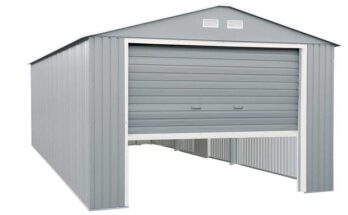Basements, while providing additional living or storage space, are often prone to water issues that can compromise the structural integrity of a home and create unhealthy living conditions. Waterproofing a basement is essential to protect your home from water damage, mold growth, and other moisture-related problems. This comprehensive guide explores the causes of basement water issues, various waterproofing methods, preventive maintenance tips, and considerations for professional vs. DIY approaches.
Understanding Basement Water Problems
The first step in waterproofing your basement is understanding what causes water issues. Several factors contribute to water infiltration in basements:
- Hydrostatic Pressure: This pressure occurs when groundwater accumulates around the foundation, pushing water through any cracks or porous areas in the walls and floors.
- Poor Drainage: Inefficient or clogged drainage systems can lead to water pooling around the foundation, increasing the risk of seepage.
- Structural Cracks and Holes: Cracks in the foundation walls or floors provide pathways for water to enter a leaky basement.
- Window Wells: Improperly sealed or clogged window wells can allow water to seep into the basement.
- Improper Grading: If the ground around your home slopes towards the foundation, it can direct water into the basement rather than away from it.
Exterior Waterproofing Methods
Exterior waterproofing involves addressing water issues from the outside of the home, preventing water from reaching the basement walls. This is often the most effective way to keep a basement dry.
- Excavation and Waterproof Membrane:
Process: This involves digging around the foundation to expose the walls, cleaning and repairing any cracks, and applying a waterproof membrane or coating.
Materials: Common materials include asphalt-based coatings, polyurethane membranes, and rubberized asphalt.
Benefits: This method provides a robust barrier against water penetration and protects the foundation from moisture damage.
- Exterior Drainage Systems:
French Drains: A French drain consists of a trench filled with gravel and a perforated pipe that redirects water away from the foundation.
Downspout Extensions: Extending downspouts away from the foundation helps direct rainwater away from the basement.
Grading: Ensuring the ground around your home slopes away from the foundation helps prevent water from pooling near the basement walls.
- Sump Pump Installation:
Purpose: A sump pump collects and removes accumulated water from a sump pit, preventing basement flooding.
Installation: This involves creating a pit in the lowest part of the basement and installing the pump to discharge water away from the home.
Battery Backup: Adding a battery backup ensures the pump works even during power outages, which are common during storms.
Interior Waterproofing Methods
Interior waterproofing manages water that has already entered the basement, preventing it from causing damage or making the space uninhabitable. Click here to know more.
- Interior Sealants:
Application: Sealants like epoxy or polyurethane can be injected into cracks and holes in basement walls and floors to block water entry.
Benefits: Effective for minor leaks, but not a comprehensive solution for severe water issues.
- Interior Drainage Systems:
French Drain Systems: An interior French drain involves installing a perforated pipe along the perimeter of the basement floor, directing water to a sump pump.
Waterproof Coatings: Applying waterproof coatings to the interior walls prevents moisture from seeping through porous surfaces.
- Vapor Barriers:
Installation: Vapor barriers are installed on the interior walls to prevent moisture from permeating into the basement space.
Materials: Typically made from polyethylene, vapor barriers effectively control humidity and prevent mold growth.
Combination Systems
For optimal waterproofing, combining exterior and interior methods provides the most comprehensive protection against water intrusion.
- Exterior Membrane and Interior Drainage:
Process: Combining an exterior waterproof membrane with an interior drainage system offers a dual layer of protection.
Benefits: This method addresses both external water pressure and internal moisture issues, significantly reducing the risk of basement flooding.
- Sump Pump with Battery Backup:
Purpose: Installing a sump pump with a battery backup ensures continuous operation during power outages, crucial during severe storms.
Installation: The backup system activates automatically if the primary pump fails or during electrical failures, providing peace of mind.
Preventive Maintenance and Tips
Regular maintenance and preventive measures can greatly enhance the effectiveness of your waterproofing efforts and prevent future water issues.
- Gutter and Downspout Maintenance:
Clean Regularly: Ensure gutters and downspouts are free of debris to prevent water overflow.
Extend Downspouts: Direct downspouts at least 5-10 feet away from the foundation.
- Landscaping:
Grading: Ensure the ground slopes away from the foundation to prevent water accumulation.
Plant Selection: Avoid planting water-intensive plants near the foundation, as excessive watering can contribute to soil saturation.
- Inspection:
Regular Checks: Periodically inspect the basement for signs of moisture, such as dampness, mold, or mildew.
Repair Promptly: Address any cracks or leaks immediately to prevent further damage.
Health and Safety Considerations
Waterproofing your basement is not just about protecting the structure of your home; it’s also about safeguarding the health and well-being of its occupants.
- Mold and Mildew Prevention:
Health Risks: Mold and mildew can cause respiratory issues, allergies, and other health problems.
Prevention: Keeping your basement dry and well-ventilated helps prevent mold and mildew growth.
- Pest Control:
Attraction: Damp basements can attract pests like termites, rodents, and insects.
Mitigation: Waterproofing and maintaining a dry basement helps reduce the risk of pest infestations.
- Structural Integrity:
Foundation Damage: Water infiltration can weaken the foundation, leading to costly repairs.
Long-term Protection: Effective waterproofing protects the structural integrity of your home, ensuring its longevity.
Professional Help vs. DIY
While some waterproofing tasks can be tackled by homeowners, professional help may be necessary for more extensive issues.
- Professional Assessment:
Comprehensive Evaluation: Professionals can accurately assess the extent of water damage and recommend the most effective solutions.
Expert Installation: Professional installation ensures that waterproofing systems are correctly implemented, providing long-term protection.
- DIY Solutions:
Minor Repairs: Homeowners can handle minor tasks such as applying sealants to small cracks or cleaning gutters.
Cost-Effective: DIY solutions can be more cost-effective for minor waterproofing needs but may not be sufficient for severe problems.
- Cost Considerations:
Initial Investment: Professional waterproofing services can be costly, but they offer a long-term solution.
Long-term Savings: Investing in professional waterproofing can save money in the long run by preventing extensive water damage and costly repairs.
Conclusion
Waterproofing your basement is a crucial step in protecting your home and ensuring a healthy living environment. By understanding the causes of water intrusion and implementing a combination of exterior and interior waterproofing methods, you can effectively keep your basement dry and habitable. Regular maintenance and timely repairs are essential to maintaining the effectiveness of your waterproofing efforts. Whether you choose to tackle these tasks yourself or seek professional assistance, taking proactive steps to waterproof your basement will provide peace of mind and dry, healthy living space.
In conclusion, a comprehensive approach to basement waterproofing involves understanding the root causes of water issues, employing both exterior and interior methods, and maintaining regular upkeep. By doing so, homeowners can protect their investments and create a safe, comfortable environment for their families.




